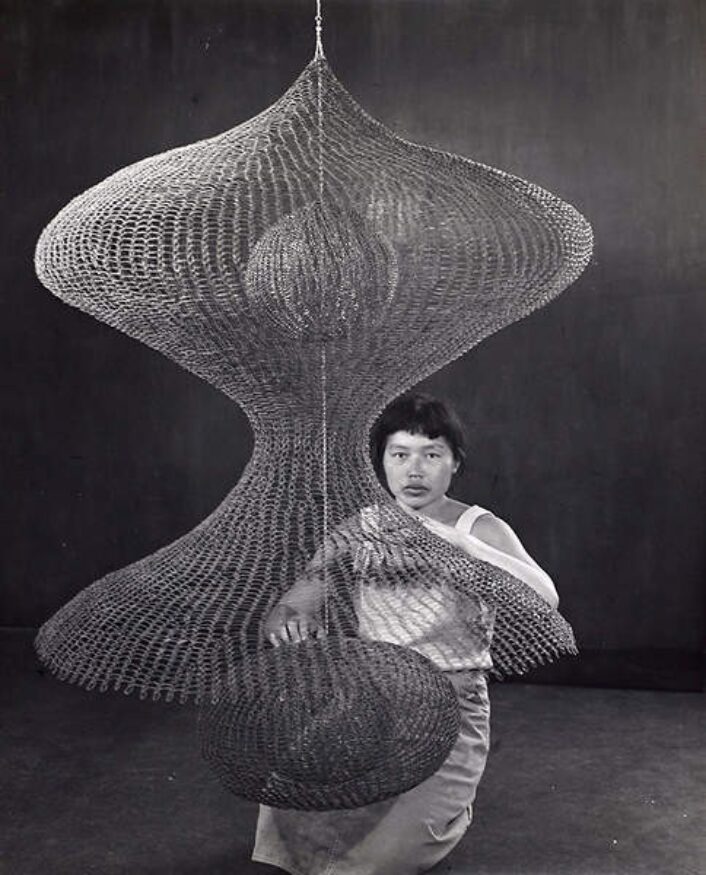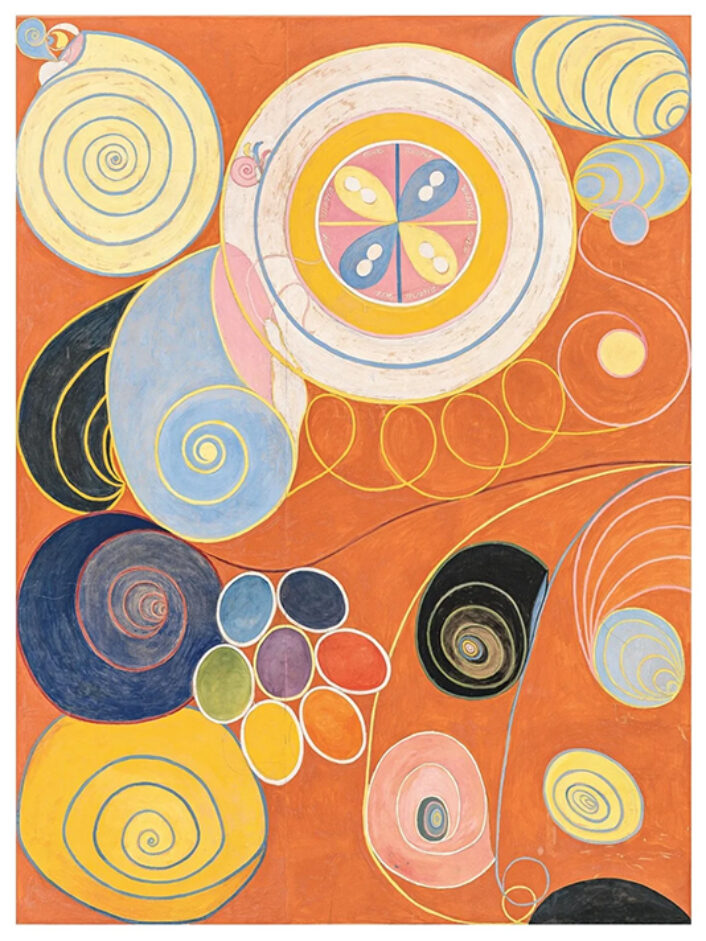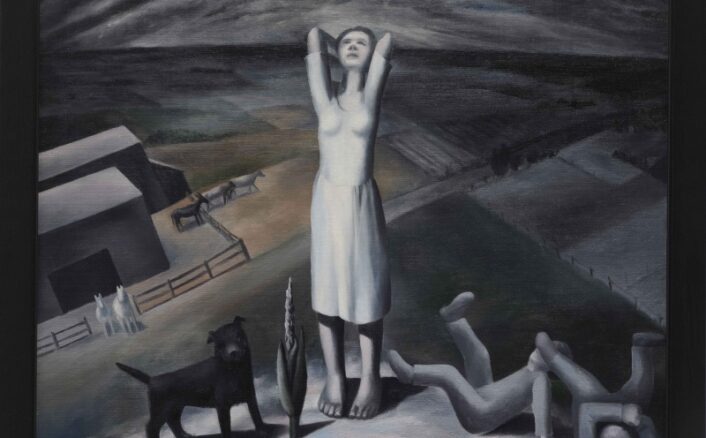Fine Art
Hedda Sterne
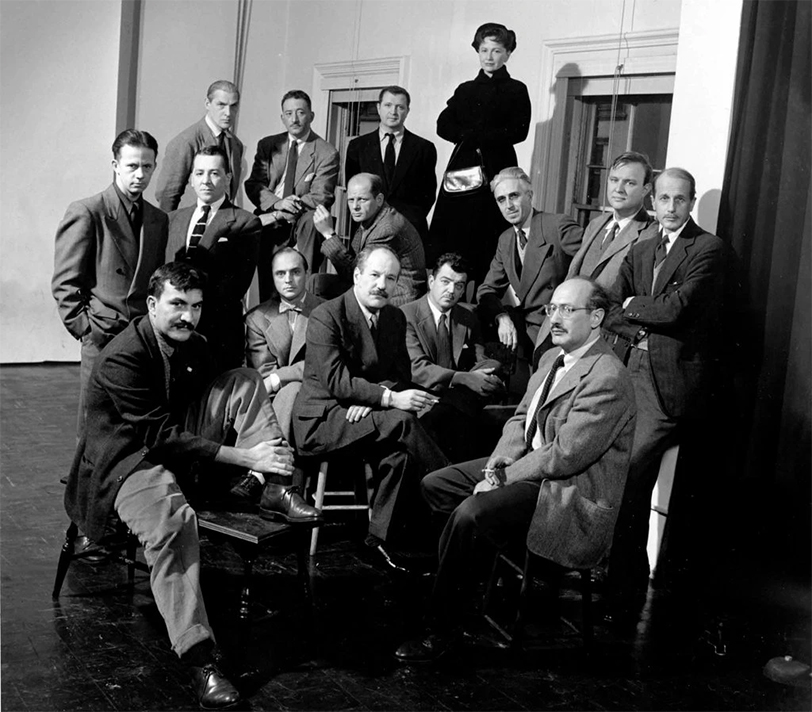
Hedda Sterne stands in the back of Nina Leen’s infamous 1951 photograph for Life magazine.
Image courtesy of: The New York Times, photographed by: Nina Leen
Hedda Sterne is perhaps best known for posing in the famous 1951 Life magazine photograph of those Abstract Expressionist artists leading the way. Sterne was sole woman amongst the 16 men photographed. And other than that basic difference, Sterne differed from her male counterparts in that she shared only a few of the stylistic and philosophical concerns of the movement.
The photograph reached mythic status and projected its subjects to fame… however, Sterne soon after retreated. She spent the next 50 years quietly working and perfecting her art. Even though she frequently exhibited, Sterne never developed a marketable artistic signature because she made frequent stylistic changes.
Sterne’s longtime dealer, Betty Parsons said, “She had many ways; most artist just have one way to go.”
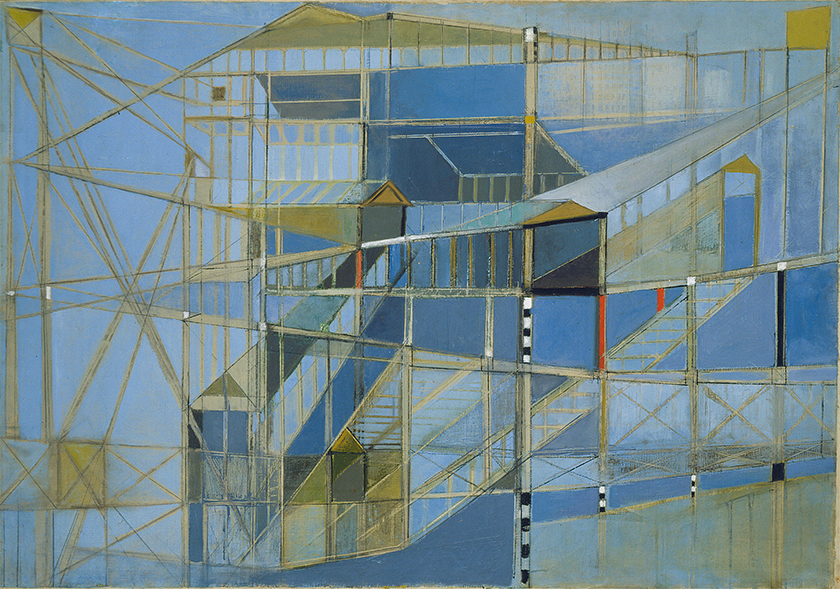
“New York, N.Y., No X,” 1948. Oil on canvas, from The Tate Collection, London. 1948.
Dimensions are: 31.75″ x 45.5″
Image courtesy of: The Hedda Sterne Foundation
Hedda Sterne was born Hedwig Lindenberg in Bucharest, Romania. She studied art history and philosophy for a year at the University of Bucharest before she left to become a full-time artist. Encouraged by the Romanian surrealist Victor Brauner, a family friend, in 1938 she exhibited several surrealist collages at a show organized by Hans Arp. It was at this Paris show that Sterne met Peggy Guggenheim who went on to include one of her works at a show in her London gallery.
This fated meeting was a turning point for Sterne. She began to exhibit at Guggenheim’s gallery, Art of This Century, and soon after was given a solo show by her dealer, Betty Parson. Her relationship with Parsons enabled Sterne to develop friendships with many of the Abstract Expressionist artists. It was here that she met Saul Steinberg, a fellow Romanian and artist who she married in 1944.
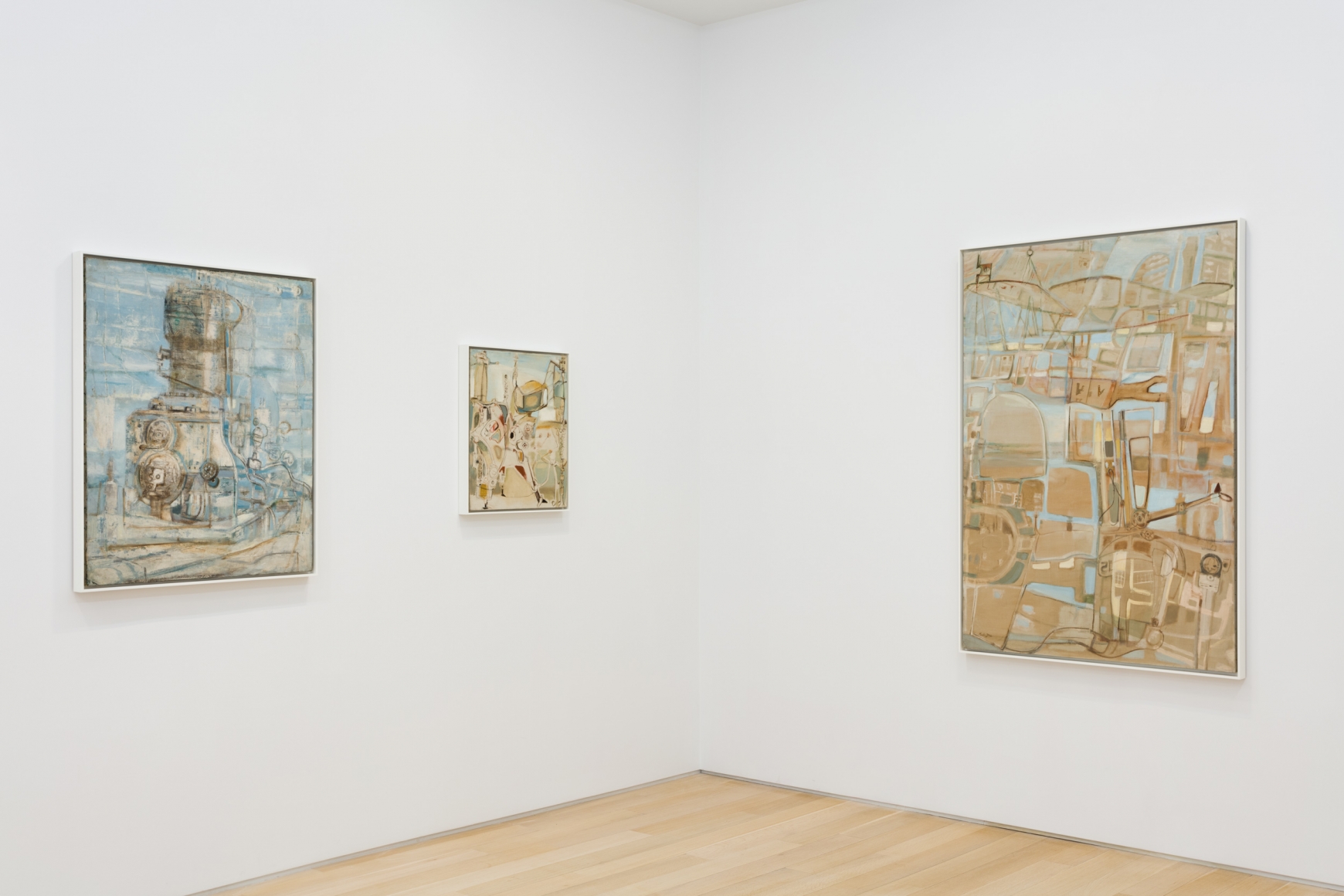
“Hedda Sterne: Machines 1947-1951,” a gallery exhibition at New York City’s Van Doren Waxter of mid-century paintings and works on paper from American’s post-war period.
Image courtesy of: Van Doren Water
In 1946, Parsons would go on to open a gallery and Sterne was one of the first sixteen artists represented. The two would go on to collaborate on more than 40 exhibitions until Parsons’ death in 1982.
It might be said that Sterne’s various collections were a reaction of the world changing around her. Just as she was initially connected to the surrealist movement and then the Abstract Expressionist movement, Sterne began to draw inspiration from motion and architecture. A trip to rural Vermont enticed Sterne to begin studying farm machinery which lead to studying the construction sites and harbors of New York and post-war Paris. These paintings and drawings evolved into a series about motion. Sterne produced mechanical images with human overtones that she titled, “anthropographs.”

“Horizon XVIII,” 1963.
Image courtesy of: The Guardian
Perhaps Sterne’s most impressive paintings were the ones she called “Vertical-Horizontals”. The arrangement of horizontal bands of subdued color on vertical canvases were overly abstract (even though she denied that classification). During the 1960s Sterne began to expand her themes beyond what she saw in her immediate surroundings; light and space became a central focus of her work.
Inspired during her Fulbright fellowship to Venice, the horizontal bars in the paintings are not stripes but pieces of paint laid on a canvas in relation to one another… in a variety of overlaps, blends, and pieces of merging colors. From close up, there is not one exact color; rather, there is a stunning arrangement of yellows, black, and taupes portraying an internal light. What appears as a simple composition is intensely complicated.
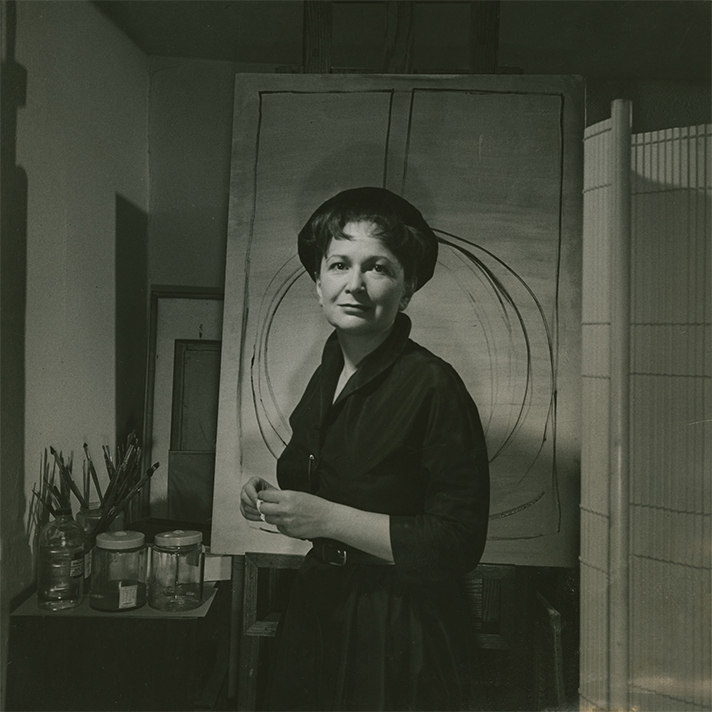
Taken in 1950, Sterne at her studio.
Image courtesy of: The Hedda Sterne Foundation,photographed by: Gjon Mili
In 2006 when Sterne was 94, she prepared for her third retrospective exhibition. When asked to reflect upon her practice and inspiration, she said, “Sometimes I react to immediate visible reality and sometimes I am prompted by ideas, but at all times I have been moved by the music of the way things are. One can find secret significance at the depth of the ordinary. I believe that simplicity is an invention of man. Nature is never simple. And, the habit of careful study of the visual immediate opens our eyes to the presence of mystery in the seemingly obvious.”
Indeed, Sterne was ahead of her time in the fact that she remained committed to the journey of discovery and exploration throughout her ENTIRE lifetime. For nine decades, Sterne was 100% committed to opening her heart and her eyes to new revelations. She will remain a source of inspiration to aspiring artists for years to come!
